AARON GOLD December 20, 2022 All Feature Vehicles
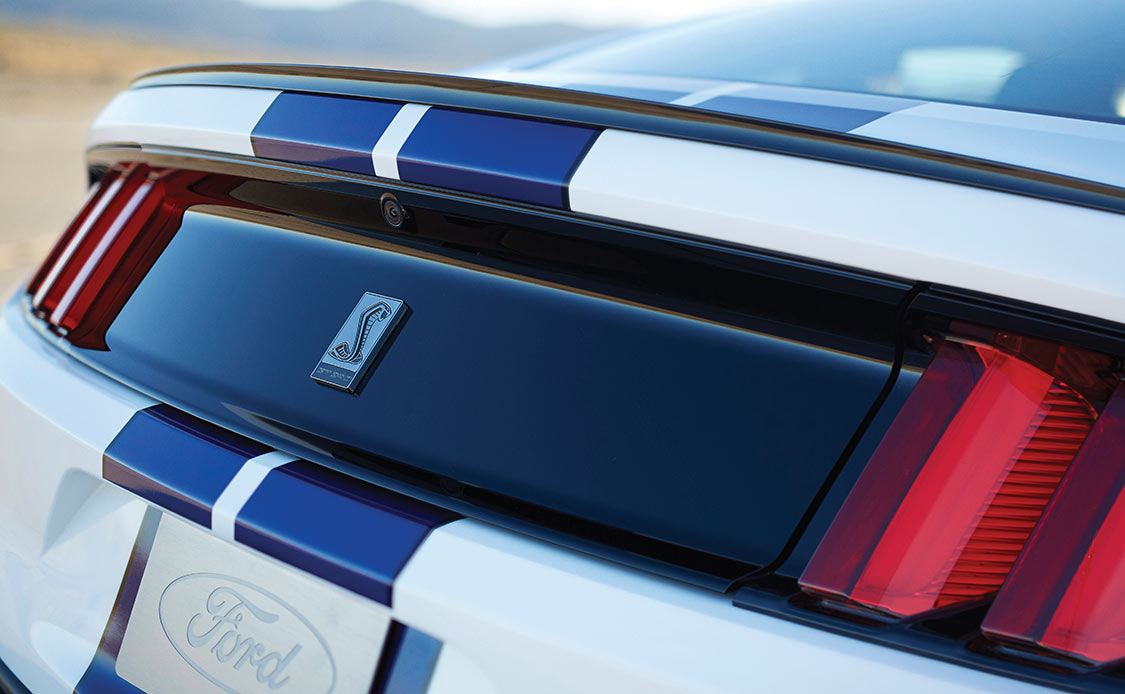
GT350: Few alphanumeric combinations resonate more with gearheads, whether or not they’re Ford fans.
The GT500 may have been the king of the road, but the GT350 was the working man’s hero: a small-town welterweight who made it big.
Ford has shown restraint in its use of the GT350 moniker, invoking it for only a handful of special-edition Mustangs since Shelby’s 1965 original. This past year, 2015, was one of those years, and we think the new GT350 is worthy of the name.
Ford and Shelby American first unleashed the GT350 in 1965. Ford designed the Mustang to run the gamut from six-cylinder “secretary’s car” to full-on racer; however, getting SCCA approval for the Mustang required some serious work, so Ford turned to Carroll Shelby. Shelby is a legend now, but back then he was a recently retired racing driver who was just starting to make a name for himself with his Ford-powered AC Cobras, and he was also being tapped by Ford to sort out the GT40 for LeMans.
The original GT350 took Ford’s “secretary car” and made it into a racing powerhouse more popular than ever in vintage racing today.
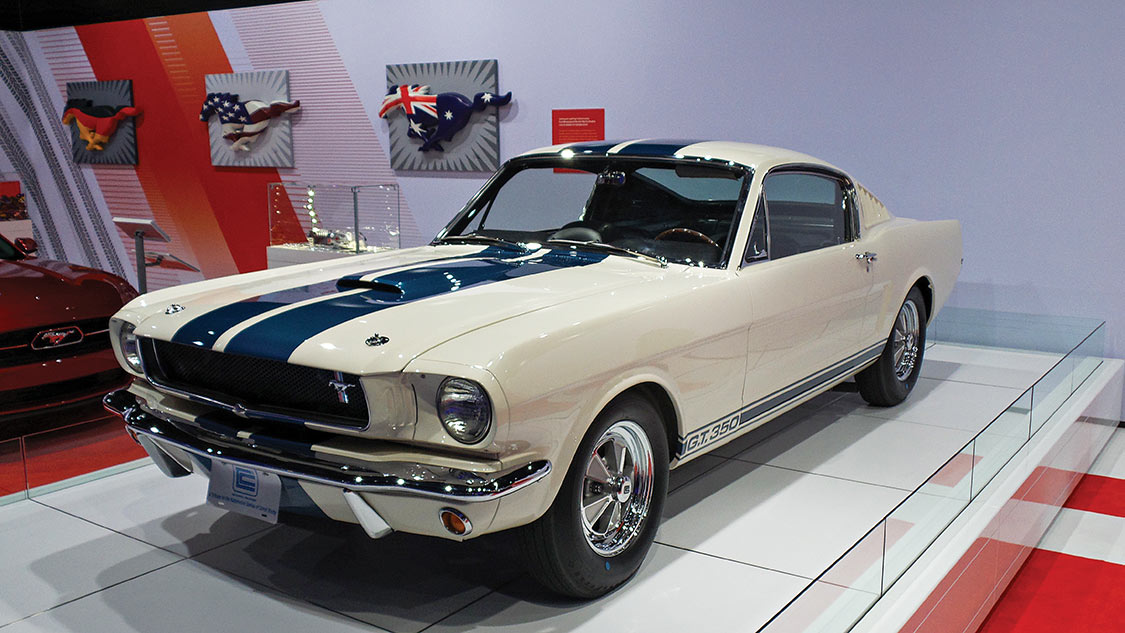
The original batch of GT350s started out as factory-built ’65 Mustang GT hatchbacks that were shipped to Shelby America in California for modification. There, the cars received a stiffened suspension with Koni adjustable shocks, extra body bracing, a beefier rear axle with a limited- slip diff and bigger brakes (Kelsey-Hayes discs up front and drums from a full-size Ford station wagon out back). Fifteen-inch mag wheels held Goodyear tires rated for 130 mph.
The 289-ci engine received a high-rise intake manifold, re-jetted four-barrel carb with center-pivot floats (to reduce fuel sloshing around under hard acceleration, braking and cornering) and tube headers, all of which raised the output by 35 hp to 306. Shelby’s crew finished off the cars with a fiberglass hood and the signature blue racing stripes.
Technically, the original GT350 was a homologation special, a run of street-legal cars necessary to get SCCA approval. The real raison d’être was the race-ready GT350R, which shared the GT350’s chassis mods and added a full-on blueprinted racing engine and a stripped-out interior.
For the recent 50th anniversary of the original GT350, was there a better time for a new one? But if you think the new GT350 is a just a tarted-up Mustang GT, think again.
The star of the new GT350 is the 5.2LV-8engine, code-named Voodoo. This is the first production engine from Ford to use a flat-plane crankshaft, which offsets the connecting rods at 180-degree intervals rather than the standard 90 degrees.
The flat-plane crank allows the firing order to alternate between cylinder banks, reducing exhaust pulse interference and improving high-rpm power. High rpms are the name of the game: the Voodoo redlines at a nose- bleed-inducing 8,250 rpm, and its peak horsepower is delivered at 7,500 rpm.
If you’re a gt350 aficionado, you know the original was more about the chassis than the engine.
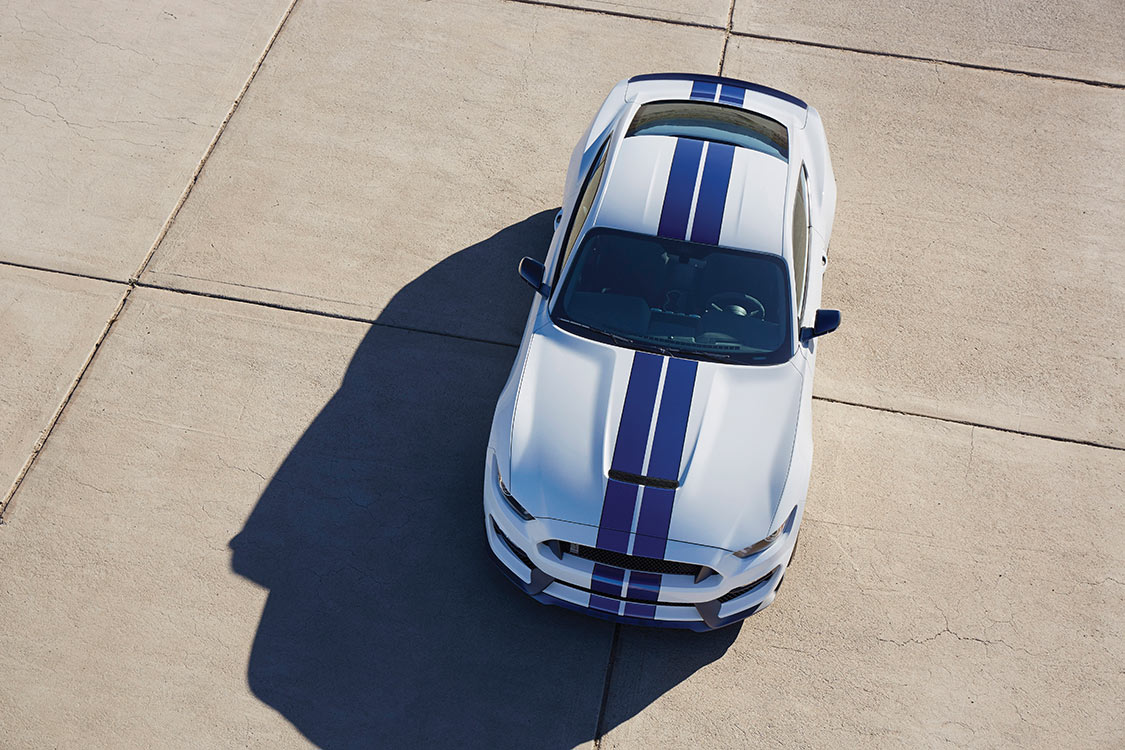
How much horsepower? Five hundred and twenty six. Let that number roll around in your brain for a moment: 526 horsepower. That’s more horsepower than an original ’65 GT350 and a plain ol’ 289 Mustang combined (and we’re ignoring the fact that ’65s were measured in gross horsepower rather than modern-day net hp).
We hasten to add that the Voodoo does not use forced induction; it’s the most powerful naturally aspirated engine Ford has ever produced. Peak torque is 429 lb-ft at 4,750 rpm, with 90% of the engine’s torque available between 3,450 and 7,000 rpm. All of this power is channeled through a six-speed manual transmission to a Torsen limited-slip differential.
If you’re a GT350 aficionado, you know the original was more about the chassis than the engine. The stock Mustang GT is, without question, the best-handling Mustang yet (helped by the adaptation of an independent rear suspension; only took ’em 50 years), but the GT350 strives for more. Along with revised spring rates and a lowered ride height, the GT350 gets a wider front track than the standard Mustang. Widening the track necessitated revised sheet metal, so all of the tin ahead of the A-pillar is unique, with a lower hood line and a carbon-fiber composite grille opening.
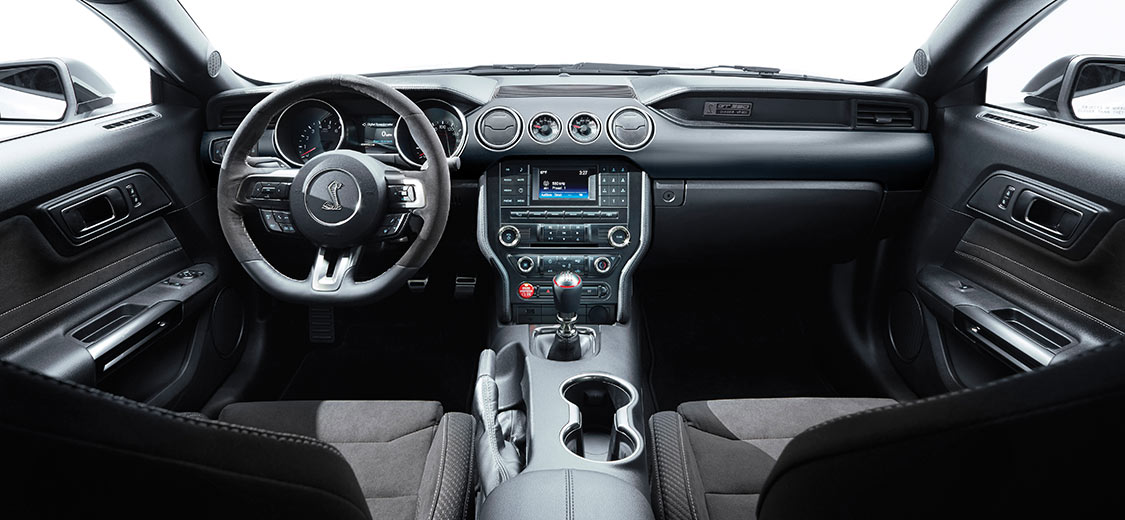
One of the most notable upgrades is the inclusion of MagneRide shock absorbers, which are a pretty big deal considering this is a pet technology of archrival General Motors (GM refers to it as Magnetic Ride Control, or MRC) that can be found in the Corvette, Camaro and Cadillac’s V-series cars. (Audi uses it for some of its high-end sporting models as well.) MagneRide dampers use a fluid that is impregnated with iron particles. When a magnetic force is applied, the fluid’s flow resistance increases. This allows the use of a more compliant shock that can be stiffened nearly instantly. Ford’s system monitors the motion of the wheels and can alter the shock stiffness every 10 milliseconds. We’ve been impressed by this system in other vehicles; it provides all the benefits of a super-stiff shock without the super-stiff ride, and we’re pleased to see it employed on the new GT350.
As with the original GT350, brakes are also on the upgrade list: six-piston Brembo calipers up front with four-pot calipers out back. Disc diameter is 15.5 inches up front and 15 inches in the rear; the rotors are two-piece, cross- drilled, iron units with aluminum hats. Why no carbon fiber? Ford said it wanted to keep the price down.
You’ll find those brakes nestled inside of 19- inch aluminum alloy wheels, 10.5 inches wide up front and an extra 1⁄2-inch in the back. Tires are Michelin Pilot Super Sports with a tread pattern unique to the GT350.
Just like Shelby did back in 1965, Ford created a special track-ready version of the GT350, and it too is called GT350R. Costs a pretty penny but no doubt you’ll think it worth the extra cash. Changes include significant chassis, suspension and body changes as well as a severe diet.
Upgrades start with the suspension, with unique spring rates, sway bars and bushings and special tuning for the MagneRide dampers. The ride height is slightly lower than the standard GT350, and the front suspension features cross-axis ball joints. Even the alignment settings are unique to the R.

Weight reduction is a key element in the GT350R, so the rear seats, air conditioning, stereo, trunk floor, tire repair kit, backup camera and even the exhaust resonators have been sacrificed. (Those who want a little more comfort for street driving can order air conditioning, a stereo and navigation as part of an option package.) Carbon-fiber wheels shave 13 pounds of unsprung weight per corner compared to the GT350’s aluminum wheels, and they are shod with Michelin Pilot Sport Cup 2 tires with a 350R-specific compound.
Finally, the R gets revised aerodynamics in the form of a revised front splitter and carbon-fiber rear spoiler, both of which work to increase downforce and move the center of pressure towards the back of the car. Red-painted brake calipers, red interior trim and a red edge to the distinctive racing stripes visually separate the R from the other GT350 models.
Ford is in full production as of 2016. Official pricing has the GT350 at about $50,000 while the R will fetch $63K. That, of course, is before dealers decide if they’re going to add a hefty price premium to their stock.
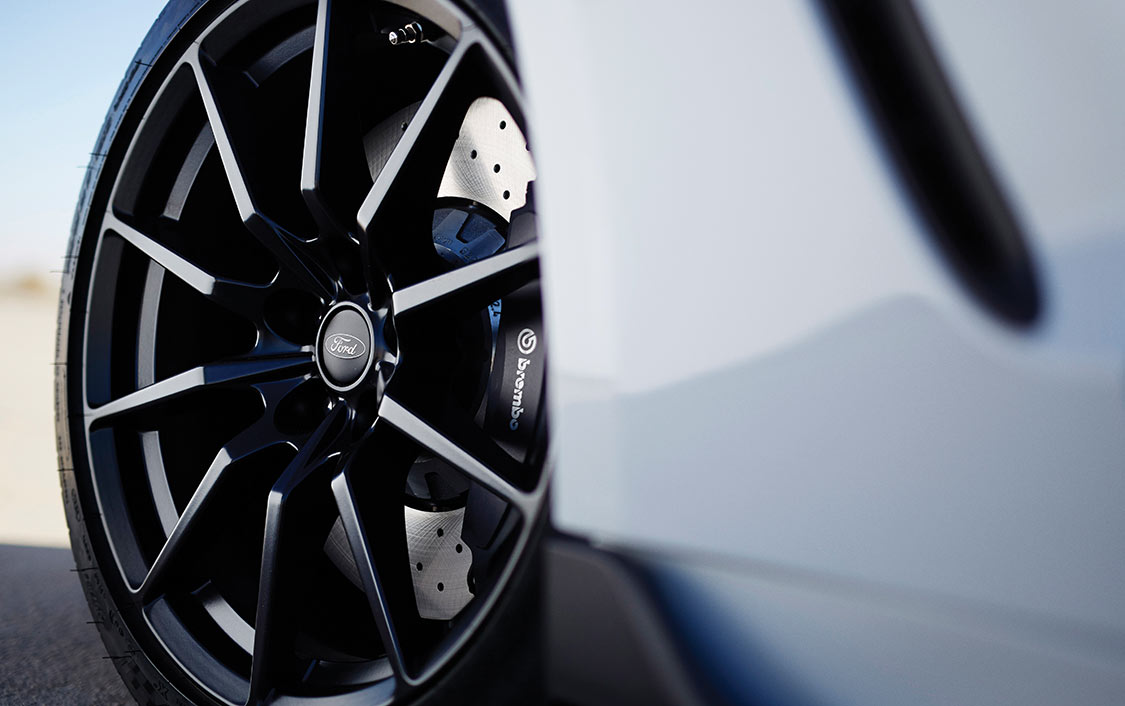
It’s hard not to be excited about a 500-plus-hp Mustang, but we’re intrigued not just the big power numbers; we also appreciate the attention to other equally important details. Having seen what Ford can do with previous-gen Mustangs (much as we love the Shelbys, the M3- chasing Boss 302 remains one of our favorites), we’re looking forward to our chance to run the new GT350 both on the street and on the track, now that it’s available.
Most of all, we’re pleased that Ford is treating the GT350 moniker with the respect it deserves by building a car in the spirit of the original. Ol’ Carroll may be gone, but we think he’d be rather fond of this new GT350.
Editor’s Note: A version of this article first appeared in the April 2016 print issue of the Drive Magazine.